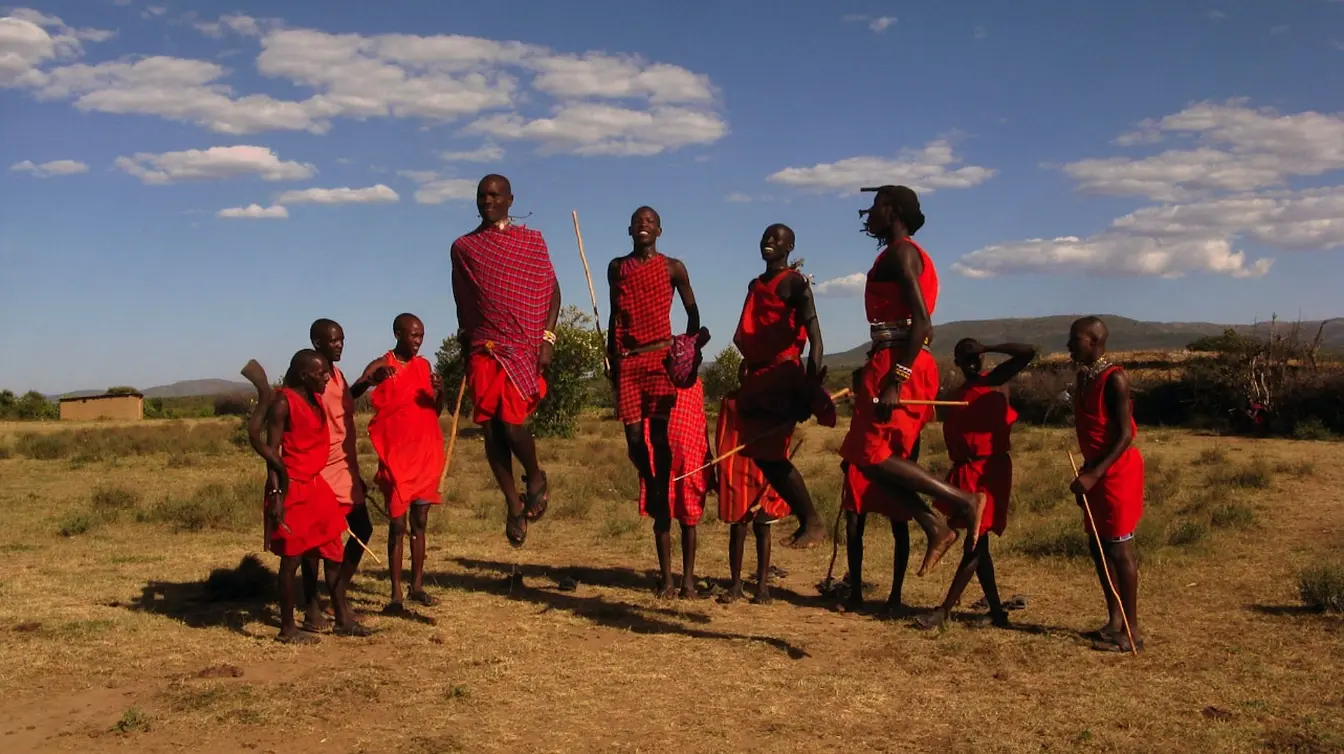Weather and climate Masai Mara
It doesn’t matter if the sun blazes overhead or the rain gently kisses the earth, exploring the Masai Mara National Reserve guarantees a remarkable adventure.
Though most travelers dream of clear blue skies for their safari in the Masai Mara, there’s something undeniably magical about Africa’s rainy seasons. The legendary 1980s rock band Toto immortalized this allure in their hit song celebrating the rains of Africa. Before you start gathering your safari essentials, let’s dive into an in-depth look at the weather and…
Masai Mara Climate
Many assume the Masai Mara is excessively hot due to its African location, but its high altitude—ranging from 1,500 to 1,900 meters—creates a surprisingly mild and humid climate. With pleasantly warm daytime temperatures, the days offer warm weather ideal for exploration. However, you should expect chilly early mornings and nights,so make sure to bring cold weather that requires extra layers. Packing a sweater for early morning game drives is highly advisable.
Masai Mara Weather by Month
The Masai Mara’s weather and climate make it a fantastic safari destination all year round. Average daytime temperatures remain comfortable, ensuring excellent wildlife viewing conditions.
Weather Overview
January – February: A dry spell between the short and long rainy seasons, with only occasional rain showers. Days are warm and pleasant, perfect for safari adventures.
March – May: The long rains arrive, with April receiving the heaviest downpours. While it doesn’t rain continuously, frequent showers make trails muddy. Mornings can be chilly, with temperatures around 13°C (55°F), while average daytime temperatures remain mild.
June – August: This period brings mostly sunny and dry weather, with average daytime temperatures around 25°C (77°F). However, nights are much colder, dropping to about 10°C (50°F).
September – October: Occasional rain showers occur, but the overall climate remains dry. October’s average afternoon temperatures reach 27°C (81°F). After rain, it may feel slightly cooler, and early mornings can be cold at around 12°C (54°F).
November – December: This is the short rainy season, characterized by occasional rain showers. Average temperatures in the afternoons hover around 27°C (81°F), maintaining a warm yet slightly humid feel.
Rainfall Patterns in the Masai Mara National Reserve
Each year, the Masai Mara records an estimated 1400 millimeters (55 inches) of rainfall. April sees the highest precipitation, whereas July is typically the driest. The reserve experiences two rainy seasons: the short rains in November and December and the long rains stretching from March to May. April marks the peak of the wet season with the heaviest downpours, though both rainy periods can bring occasional flooding.
Masai Mara climate charts
MONTH TO MONTH AVERAGE MAXIMUM AND MINIMUM TEMPERATURES
| JAN | FEB | MAR | APR | MAY | JUN | JUL | AUG | SEP | OCT | NOV | DEC | |
|---|---|---|---|---|---|---|---|---|---|---|---|---|
| Max °C | 28 | 28 | 27 | 26 | 25 | 25 | 25 | 25 | 27 | 28 | 27 | 27 |
| Min °C | 12 | 12 | 12 | 13 | 12 | 13 | 12 | 11 | 11 | 11 | 12 | 12 |
| Max °F | 82 | 82 | 81 | 79 | 77 | 77 | 77 | 77 | 81 | 82 | 81 | 81 |
| Min °F | 54 | 54 | 54 | 55 | 55 | 54 | 52 | 52 | 54 | 54 | 54 | 54 |
MONTH TO MONTH AVERAGE RAINFALL IN MM
| JAN | FEB | MAR | APR | MAY | JUN | JUL | AUG | SEP | OCT | NOV | DEC | |
|---|---|---|---|---|---|---|---|---|---|---|---|---|
| mm | 95 | 100 | 145 | 210 | 155 | 95 | 60 | 80 | 95 | 100 | 155 | 115 |
| inches | 3.7 | 3.9 | 5.7 | 8.3 | 6.1 | 3.7 | 2.4 | 3.1 | 3.7 | 3.9 | 6.1 | 4.5 |
HOURS OF SUNSHINE PER DAY IN MASAI MARA
| JAN | FEB | MAR | APR | MAY | JUN | JUL | AUG | SEP | OCT | NOV | DEC | |
|---|---|---|---|---|---|---|---|---|---|---|---|---|
| Hours | 9 | 9 | 8 | 7 | 7 | 8 | 7 | 7 | 8 | 8 | 8 | 8 |
Inquire About Your Masai Mara Safari
Whether you’re drawn to the sun-drenched golden plains or the lush green landscapes of the rainy season, the weather and climate in the Masai Mara ensure an unforgettable safari experience year-round. From the dry season’s prime wildlife viewing to the dramatic beauty of the wet season, nature always puts on a spectacular show.
Email us at [email protected] or [email protected], or WhatsApp/Call us at +254 748 258880.
Welcome to AjKenya Safaris
Thanks for stopping by! We’re excited to help you plan an unforgettable safari.
- Phone: +254 748 258880
- WhatsApp: +254 748 258880
- Email: [email protected]
- Email: [email protected]





